SUP clothing should dry quickly, be comfortable and easy to move in, and it should also protect you from the elements. But the paddle board clothing you choose can vary greatly, depending on the type of paddle boarding you are doing, the weather and also on the water conditions. So, it’s important to understand what to wear paddle paddle boarding in all different conditions so that you can opt for the correct clothing for you.
- What shoes to wear paddle boarding
- What to wear paddle boarding
- What to wear paddle boarding in summer
- What to wear paddle boarding in winter
- What to wear paddle boarding in spring and autumn
- Things to consider when choosing clothing for paddle boarding
What shoes to wear paddle boarding
One of the first questions that beginner paddle boarders ask is do I need to wear shoes when paddle boarding?
The answer: yes and no!
When you should wear shoes for paddle boarding
In certain scenarios wearing shoes is highly recommended. If you are paddling in areas where the sea, lake or river bed is predominantly covered in sharp and jagged rocks then protective water shoes will help prevent a mishap should you fall in, or when launching.
If you are paddling in cold conditions then you’ll want to consider wearing wetsuit booties to keep your feet warm. These are not waterproof and don’t prevent water from getting in. However, they perform in the same way that a wetsuit does by heating up the water that enters the boots. They also have grippy bottoms to stop you from slipping on your board.
Additionally, whitewater paddle boarders will absolutely need to wear shoes to protect their feet and toes from rocks in the rapids.
When you don’t really need to wear shoes
If you are paddling in deep water and launching off sandy beaches or directly off a jetty, there’s no need to wear SUP shoes from a protective point of view. Paddle board decks have plenty of grip that work just fine with bare feet. And if the weather is warm and the water temperature comfortable then wearing shoes for paddle boarding can become sticky and annoying very quickly.
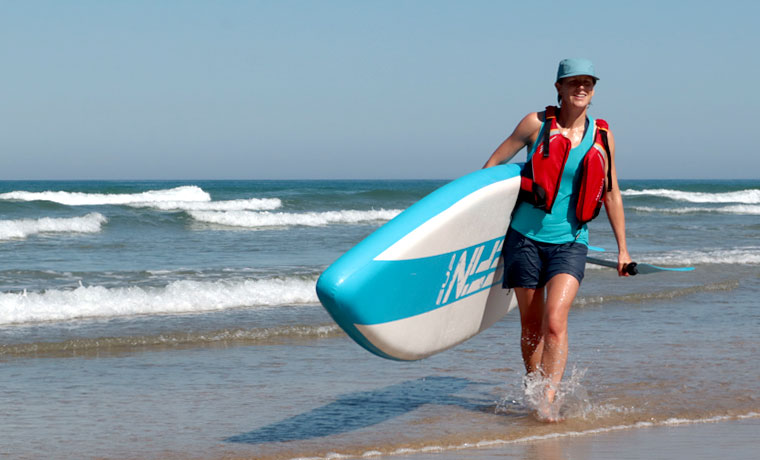
What to wear paddle boarding in summer
The majority of paddle boarders tend to take to the water during the summer months when the water is warm and the sun hot. If this sounds like you, then firstly, good choice! Paddle boarding lends itself very nicely to cruising in the sunshine. But secondly, you won’t need to think too hard about what to wear paddle boarding. Swimwear, quick-drying shorts, a sun hat and a rashguard or sports t-shirt will do just fine. Easy!
That said, I recently wore a summer wetsuit (3/2) in the rain and wind in and it was perfect. It was June in the UK. If the sun decided to come out then I would have pulled the top of my wetsuit down, as I had a bikini top and short-sleeved rash vest underneath. This also meant that I wasn’t too worried about falling in (which is always a possibility when you have a wriggling 7-year old as your cargo!) If the risk of taking a swim was lower, I would have worn quick-drying shorts, a rashguard or synthetic t-shirt and a waterproof jacket.
Here’s a quick list of what to wear paddle boarding in the summer:

Rashguard or sport shirt
Properties: UV protective with long sleeves if you are sensitive to the sun, quick drying, fitted
Fabric: Synthetic (polyester or nylon with elastane or spandex for stretch)
Board shorts
Properties: Quick drying, not too baggy, comfortable
Fabric: Synthetic (polyester or nylon)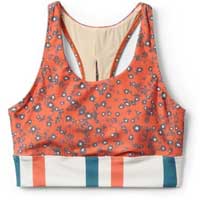
Bikini or swimsuit
Properties: Quick drying, supportive, doesn’t rub when wearing a buoyancy aid
Fabric: Synthetic (polyester or nylon with spandex or elastane)
Sun hat or cap
Properties: Quick drying, adjustable, UV protective, peaked, lightweight
Fabric: Synthetic (polyester or nylon)
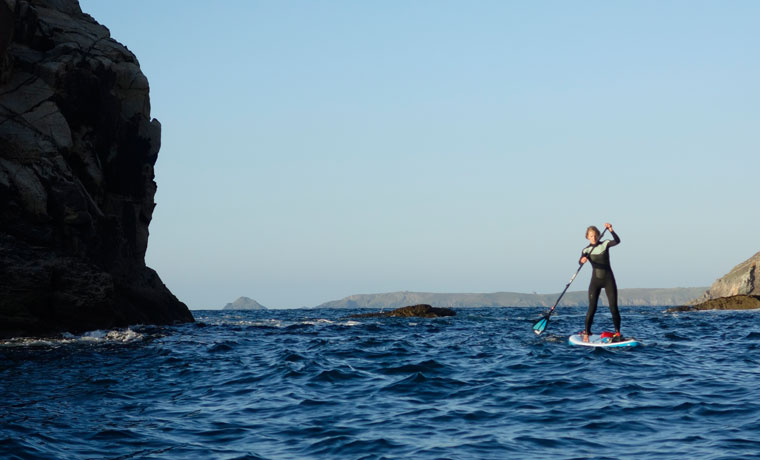
What to wear paddle boarding in winter
Choosing the right winter paddle board clothing is not quite as simple as summer SUP clothing. Firstly, winter conditions can vary wildly depending where in the world you are paddling and the local weather conditions. Secondly, it depends on what type of paddle boarding you intend on doing. Many SUP surfers continue their pursuit of the perfect wave right through the winter, regardless of the temperature. This requires a thick winter wetsuit, gloves, hood and booties.
However, for SUP touring during the winter, you can get away with wearing similar clothing to what you would wear winter hiking: warm base and mid layers with waterproof layers over the top.
Here are a few options of what to wear paddle boarding in winter:

Winter wetsuit with hood
Properties: Warm (5+mm thickness), tight fitting, good movement through the shoulders
Fabric: Neoprene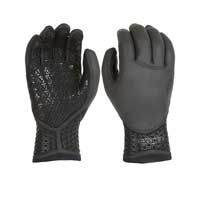
Wetsuit gloves
Properties: Warm (3+mm thickness), grippy palms, good seals and the wrists
Fabric: Neoprene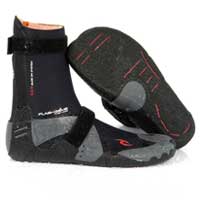
Wetsuit boots
Properties: Warm (3+mm thickness), reinforced and grippy soles, good seals and the ankles
Fabric: Neoprene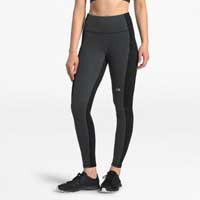
Thermal leggings
Properties: Tight fitting, quick drying, warm
Fabric: Synthetic (polyester or nylon with elastane or spandex for stretch)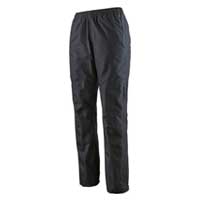
Waterproof pants
Properties: Waterproof, windproof, breathable, roomy enough to move easily in but not too baggy
Fabric: Synthetic (nylon) with breathable membrane like Gore-tex or equivalent.
Waterproof jacket
Properties: Waterproof, windproof, breathable, roomy enough to wear layers underneath, fitted hood
Fabric: Synthetic (nylon) with breathable membrane like Gore-tex or equivalent.
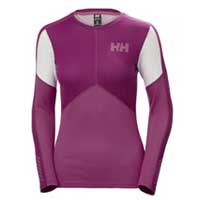
Base layer
Properties: Quick drying, moisture wicking, fitted
Fabric: Synthetic is best for quick drying, however, merino base layers are better at temperature regulating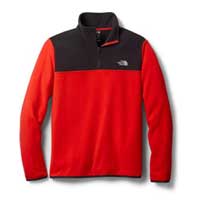
Fleece
Properties: Warm, quick drying, moisture wicking
Fabric: Synthetic (polyester)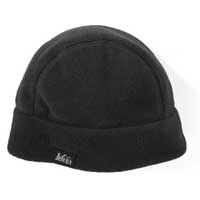
Fleece hat
Properties: Warm, quick drying, moisture wicking
Fabric: Synthetic (polyester)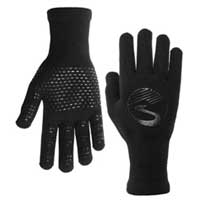
Waterproof gloves
Properties: Waterproof, windproof, breathable, warm, grippy palms
Fabric: Synthetic (polyester or nylon)
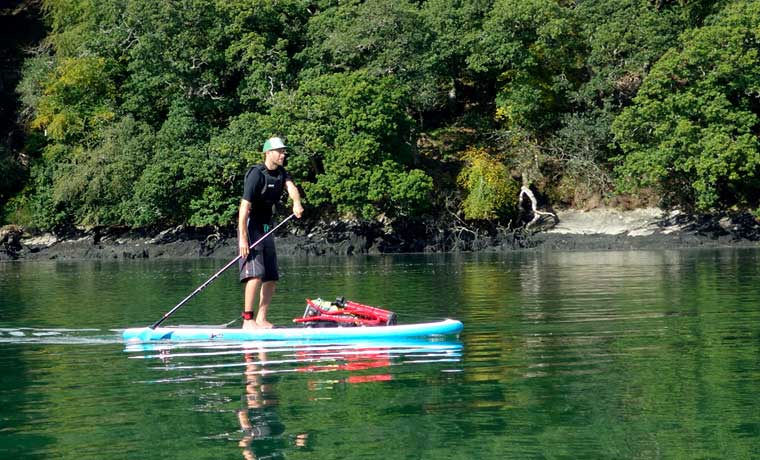
What to wear paddle boarding in spring and autumn
Knowing what to wear paddle boarding during the spring and autumn can be a tricky one. Like winter paddling, there can be huge variations in the conditions and temperature, and also the bodies of water you choose to paddle on. A mid-warmth 4/3 wetsuit is a good option if there’s a chance you make take a swim or if you are SUP surfing. Whereas, on calm waters and in some areas / conditions you might get away with something less water-specific. Quick-drying leggings, swim leggings or board shorts, plus a few layers on your top half to protect from the cold and wind (base layer and waterproof jacket), all work well.
If the winter SUP clothing options, and their variations, are too extreme for the conditions you will be paddling in during the shoulder seasons, then here are a few other options of what to wear paddle boarding in spring and autumn:
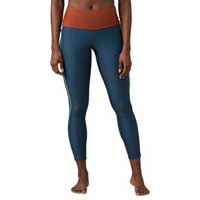
Swim leggings
Properties: Quick drying, tight fitting, UV protective
Fabric: Synthetic (polyester or nylon and spandex)
4/3 wetsuit
Properties: Tight fitting, sealed seams, good movement through the shoulders.
Fabric: Neoprene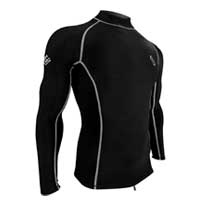
Fleece-lined rashguard
Properties: Warm, quick drying, moisture wicking, fitted.
Fabric: Synthetic (polyester fleece and lycra / spandex)
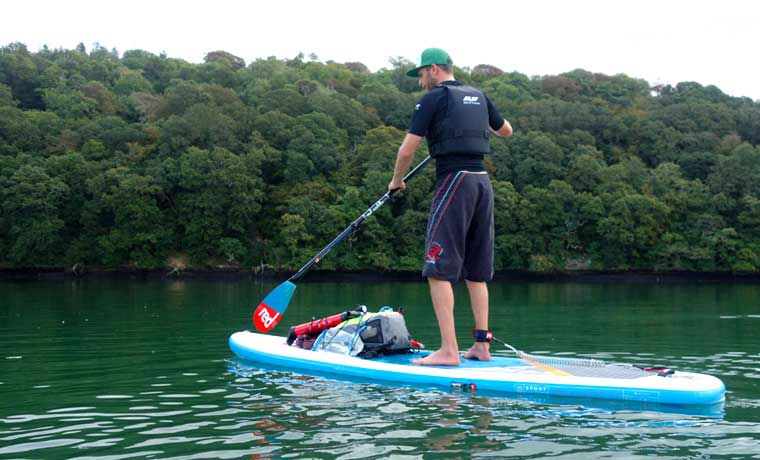
Things to consider when choosing clothing for paddle boarding
Aside from the weather, water conditions and the type of paddle boarding you will be doing, it’s worth considering a few extra things when choosing clothing for paddle boarding.
The fit
As with all activewear, SUP clothing should be comfortable. This largely comes down to how well it fits. So firstly, get the right size clothing for paddle boarding! Once you’ve got that right, SUP clothing should also be:
- Unrestrictive – your arms, shoulders and torso will be moving the whole time so your clothing should be stretchy to accommodate this. But you’ll also be switching between standing and sitting or kneeling, so restrictive pants will make life uncomfortable pretty quickly. Avoid stiff clothing that doesn’t move with your body.
- Fitted – but no so tight that it’s uncomfortable! Baggy clothing becomes heavy when wet and can cause chaffing. It also makes swimming rather difficult, so avoid excess bagginess.
Fabric properties
Because there are so many different types of clothing for paddle boarding, the below properties don’t apply to any single garment. This is simply to clarify what each term means:
- Quick drying – doesn’t hold moisture in or on the fabric for long
- Breathable – allowing air and moisture to move through the fabric
- Waterproof – prevents water from penetrating the fabric
- Windproof – prevents wind from penetrating the fabric
- UV protective – prevents harmful UV rays from penetrating the fabric
- Insulating – provides warmth by trapping air between the fabric and the body
- Moisture wicking – moving moisture away from your body
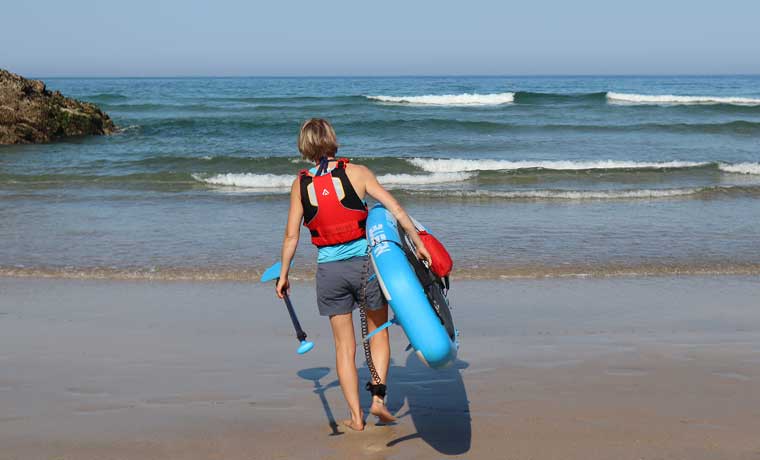
The above options are just a guide on what to wear paddle boarding. You might find that you’ll never need to go near a wetsuit. Or you might really like some of the wetsuit variations that are available like ones with short arms and legs, ones with no legs and long sleeves or any combo of arms and legs! Once you’ve been out on the water a few times you’ll start to figure out what worlds for you. And so long as you are comfortable and warm (and that you avoid cotton where possible as it takes ages to dry and becomes heavy when wet), you’ll be just fine!
Happy SUPing, happy paddlers!




